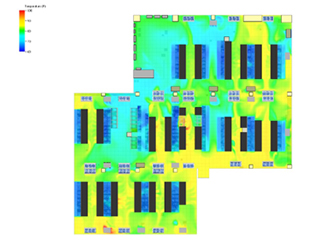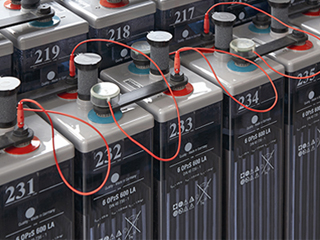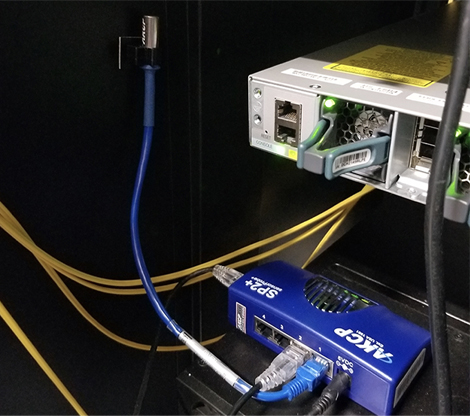
Photo Credit: gharpedia.com
Weather conditions play an important role in the curing and strength of concrete. Severe hot or cold weather is a big challenge in maintaining the concrete temperature within allowed limits. Technology has introduced innovations that improve the efficiency of the construction industry. These include tools and techniques for concrete monitoring during extreme weather concreting.
Concrete quality may be compromised if precautions are not taken during these extreme weather conditions. The curing of the concrete is slower in cold weather, reducing its strength. With hot weather concreting, problems arise when moisture in the concrete slab is removed too fast. This calls for accurate sensor monitoring to ensure that the cement is undergoing the right curing process.
Concrete Hydration
A consequential increase in heat occurs when aggregates such as sand and gravel are mixed with cement and water. The heat that is produced in this exothermic reaction is called the heat of hydration. The power of hydration is what causes the hardening of concrete.
Different chemical reactions, often at the same time, happen during the hydration process. These reactions produced “hydration products.” These hydration products make the particles of sand, gravel, and others components stick together and form a concrete mass. These are:
- Calcium silicate hydrate (C-H-S)
- Calcium hydroxide (CH)
- Calcium Aluminate Hydrate
- Ettringite
Five Phases of Concrete Heat Evolution
Heat evolution in concrete is a complex process having a substantial impact on concrete strength. This process is divided into 5 different phases. Each phase has a specific timeline and chemical reaction depending on the concrete mixture.
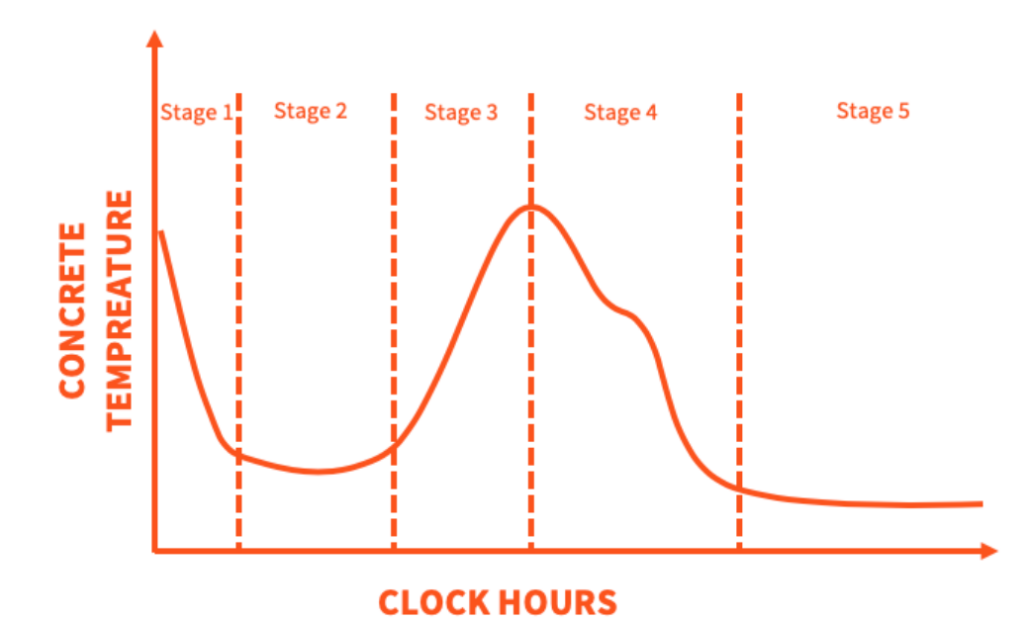
Photo Credit: maturix.com
PHASE 1: Pre-Induction
The first stage of the hydration process will start a short while after water is poured on the cement. Then, a sudden temperature rise will be expected. This will take place very quickly for about 15-30 minutes only, depending on the type of cement used. The aluminate phases (C3A and C4AF) are the primary reactive phases of the concrete. During this period, tricalcium silicate ions create a chemical reaction with the gypsum and water. The ettringite will be formed as a product of hydration. This will obstruct further tricalcium silicate reaction. An additional product of hydration will form on this stage as silicate phases (mainly C3S). This is the calcium-silicate-hydrate (C-S-H) which may create a minimal reaction.
PHASE 2: Dormant Period
After the initial reaction, the chemical compounds will coat the surface of the cement particles. This will cause the rate of hydration to slow down. When this occurs, the second phase, also known as the Induction phase, will start. This serves as the permeability time as the concrete isn’t hardened yet. Transportation and pouring of concrete are done at this stage. It can last for approximately 5 hours, depending on the type of cement used and other factors. The dormant period is one of the most important stages because the concrete is still stiff to be in a workable and controllable condition. This phase ends with the initial set of concrete.
PHASE 3: Strength Acceleration Period
In the 3rd stage, concrete starts to gain strength as it set into a hard and solid mass. The heat of hydration moderately increases until it reaches its highest point. This is because of the chemical reaction between the calcium silicate (C3S and C2S), which forms another hydration product. The silicate hydrate (CSH) significantly contributes to the overall quality of concrete as this is the main source of concrete strength.
PHASE 4: Speed Reduction
The 4th stage happens the moment the hydration heat reached its peak temperature. The hydration heat starts to decline as the hydrates already formed become a protective layer for the part which has not reacted yet. Most of the strength is gained already, which usually lasts for hours, even months. Removal of formworks is done at this stage after the required strength is achieved.
PHASE 5: Steady State
The hydration process is done upon reaching stage 5. The hydration heat will react slowly, almost the same speed on the dormant period. At this stage, the leftover water and mixture will continue to substitute. It is also known as the Post Formwork, as the formwork can now be removed. The hydration process on this final stage can last for days and months, or even years, until it finishes and gains its final strength.
Temperature Monitoring on Concrete Hydration Process
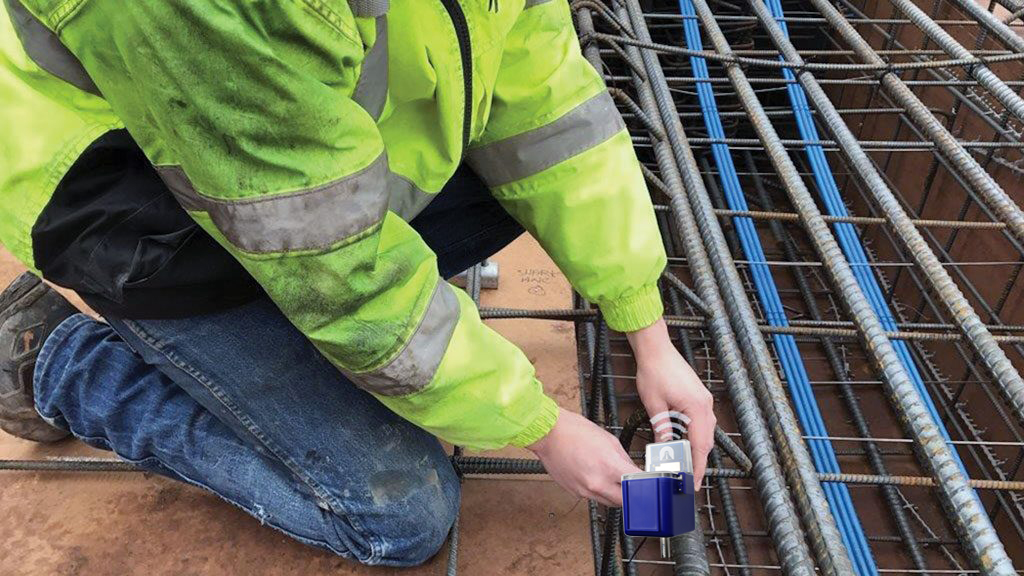
Photo Credit: amazonaws.com
Each phase of the hydration process has a distinguished temperature threshold. Thus, consistent concrete monitoring of each phase is critical to maintaining the minimum allowable temperature over the process. Unfortunately, extreme weather conditions make this temperature more difficult to maintain.
Even from the pre-added materials constituting the concrete mix, the temperature is critical. For hot weather, water is usually mixed with ice. Whereas in cold weather, water and other aggregates are heated to increased temperature. In this procedure, the allowable temperature is based on the atmospheric condition. Any action that is below or beyond this temperature threshold will affect the quality of the concrete mix. This may bring damage to the concrete structure later on.
Temperature monitoring is also done in pouring concrete mix on the 2nd phase. This ensures that the temperature is within the specifications to avoid strength reduction on concrete. Concrete temperature between 40-90F is maintained depending on the weather condition. In cold weather, the concrete temperature is kept above 40F. On the contrary, the maximum limit of temperature in hot weather is 90F.
In phase 3, where heat increases to its peak, reaching 70-80C, it is critical to monitor the internal temperature variances. Temperature not exceeding 158F (70C) should be maintained. Additionally, consistency in measuring the ambient temperature is another practice during extreme weather conditions. Variation or large temperature differential can cause thermal cracks to happen.
As the concrete gains strength on the 4th stage of the hydration process, data on the temperature is important. It can be used to track the maturity of the concrete. Therefore, temperature monitoring during this period allows engineers to know when the concrete gained adequate strength. This ensures safety in proceeding to the removal of formworks. Thus eradicating the risk of structural failure.
Hot Weather Concreting
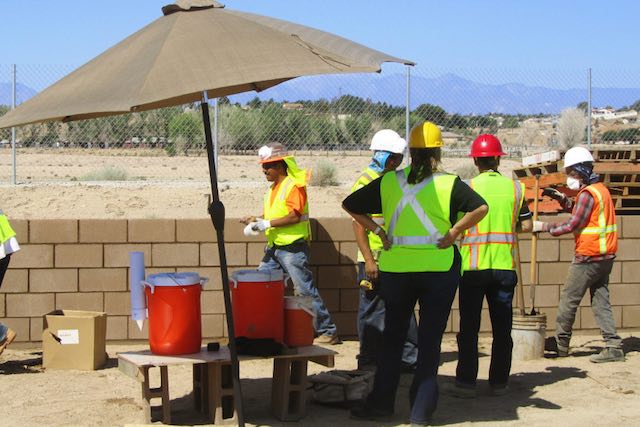
Photo Credit: www.aboutcivil.org
Hot weather is a condition having high ambient temperature coupled with low relative humidity and wind velocity. Upon exceeding 90F, IOWA Standards and Specifications recommends the implementation of hot weather concreting. For this condition, the maximum concrete temperature during the hydration is 70C. The concrete mix is adjusted by adding more mixing water for the same consistency. If the proper ratio between water and cement is not achieved, it will affect the concrete quality. Though the concrete may set and gain strength faster, its final strength will be reduced. Moreover, the temperature is also an interfering factor in the formation of ettringite in the first stage which will rise in the later stages.
During hot weather, there are precautions from the mixing, placing, and curing of concrete. Contractors need to adhere to the temperature limitation by monitoring. Otherwise, hydration will not process properly, and problems may occur.
Cold Weather Concreting
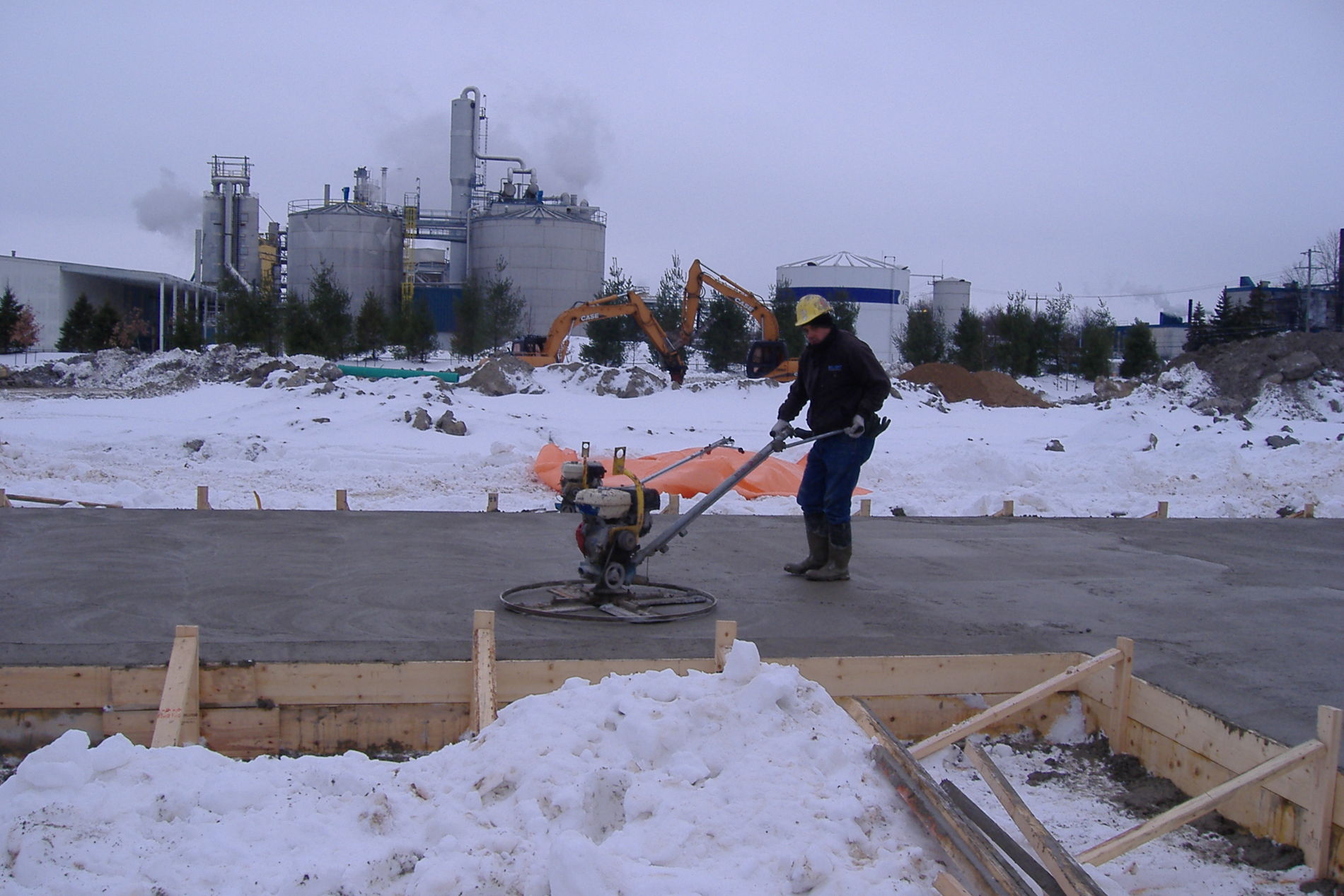
Photo Credit: www.lafarge.ca
The ACI 306 defines cold weather as “when the air temperature has fallen to or accepted to fall below 5C during the protection period”. This condition introduces challenges to the concrete hydration process making it slower. As a result, there will be a strength reduction. To overcome these, it is necessary to perform cold weather concreting procedures as the temperature drops to 40F. Another drawback of cold weather is the early freezing of concrete. This also reduces the concrete strength up to 50%. During this condition, it is important to keep the concrete from freezing. Until it reaches the minimum compressive strength of 500 psi. The use of heaters to heat water and aggregates is done to increase the concrete temperature.
This implies the importance of keeping the concrete temperature higher in cold weather. Extra precautions are also taken to ensure a quality structure even at negative temperatures. In the absence of these precautions, problems will occur. Some are delayed setting, concrete freezing, and cracking.
Using AKCP Wireless Temperature Sensors
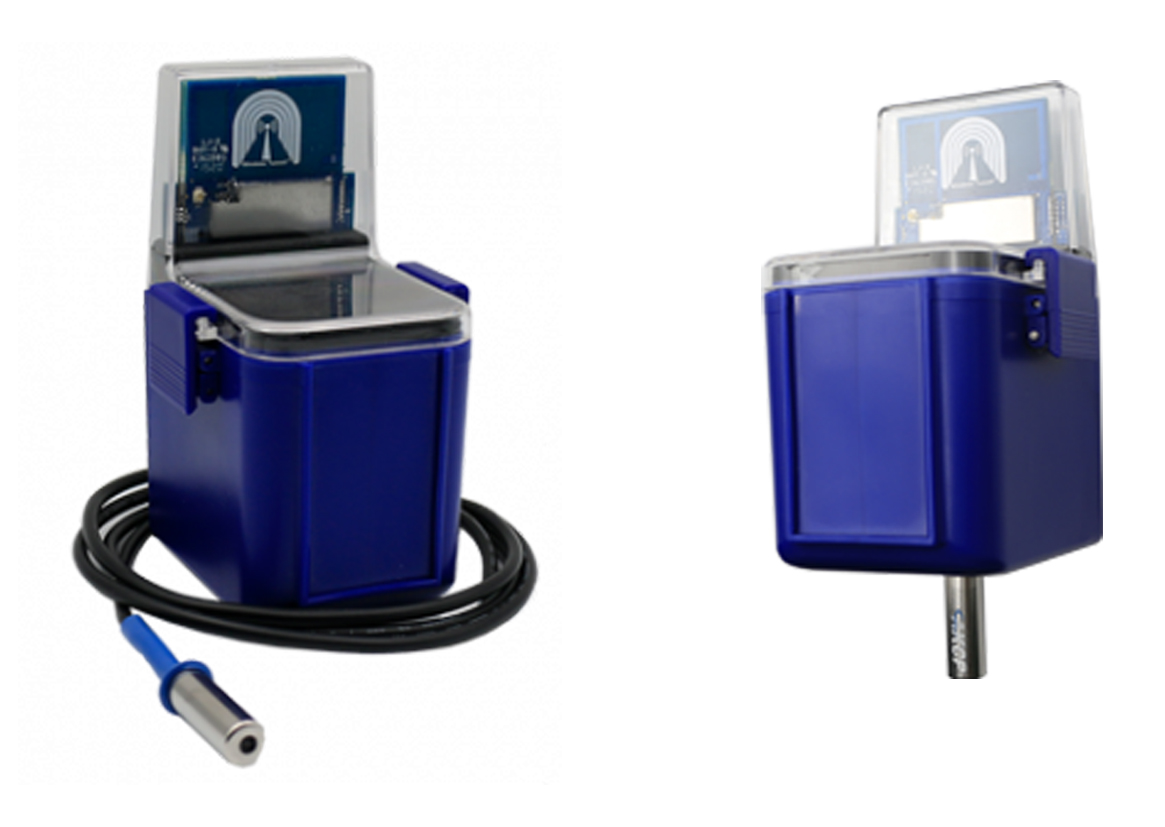
AKCP Wireless Temperature Sensors for Concrete Monitoring
The temperature of concrete in extreme weather varies on the actual ambient condition. Proper application of precautions is only made in the presence of accurate temperature data. Inaccurate and late receipt of data due to human error leads to a distorted decision.
A temperature sensor is a product of innovation, making extreme weather concreting more effective. It provides data on the concrete temperature over a specified period. Today, wireless temperature sensors provide more ease of use. With wireless technology, it is capable of providing more security. They are safe from damaged and accidents on the construction site. Operators can be confident that the sensor is in the best condition for an accurate reading. Moreover, the installation process is straightforward, eliminating the trouble of cabling. Aside from these, site engineers can have more freedom to pay attention to the other works on the construction process while monitoring. Data can be accessed using mobile apps or computers anywhere at any time.
Conclusion:
Several factors contribute to the ever-changing weather condition on the job site. Workers cannot choose whether to work at a hot or cold temperature. These will, of course, have an impact on the strength of the concrete structure. That is the reason why the quality of concrete from the lab is altered when exposed outside.
To overcome this, you need to stay on guard. Planning must be done for these variances. Preparing devices like AKCP Wireless Temperature Sensors should be part of the plans. They will serve as your guards in protecting the concrete against extreme conditions.
Sensor Features:
- 4x AA Battery powered, with 10-year life*
- USB 5VDC external power.
- 12VDC external power.
- Custom sensor cable length up to 15ft to position sensor in an optimal location.
- NIST2 dual-sensor calibration integrity check.
- NIST3 triple sensor calibration integrity checks with failover.
Reference Links:
https://www.linkedin.com/pulse/why-concrete-temperature-important-especially-during-extremes-canute/
https://www.ijsr.net/archive/v6i5/ART20173754.pdf
https://www.understanding-cement.com/hydration.html
https://kth.diva-portal.org/smash/get/diva2:1116691/FULLTEXT01.pdf
https://www.nrcs.usda.gov/Internet/FSE_DOCUMENTS/nrcs142p2_011443.pdf

